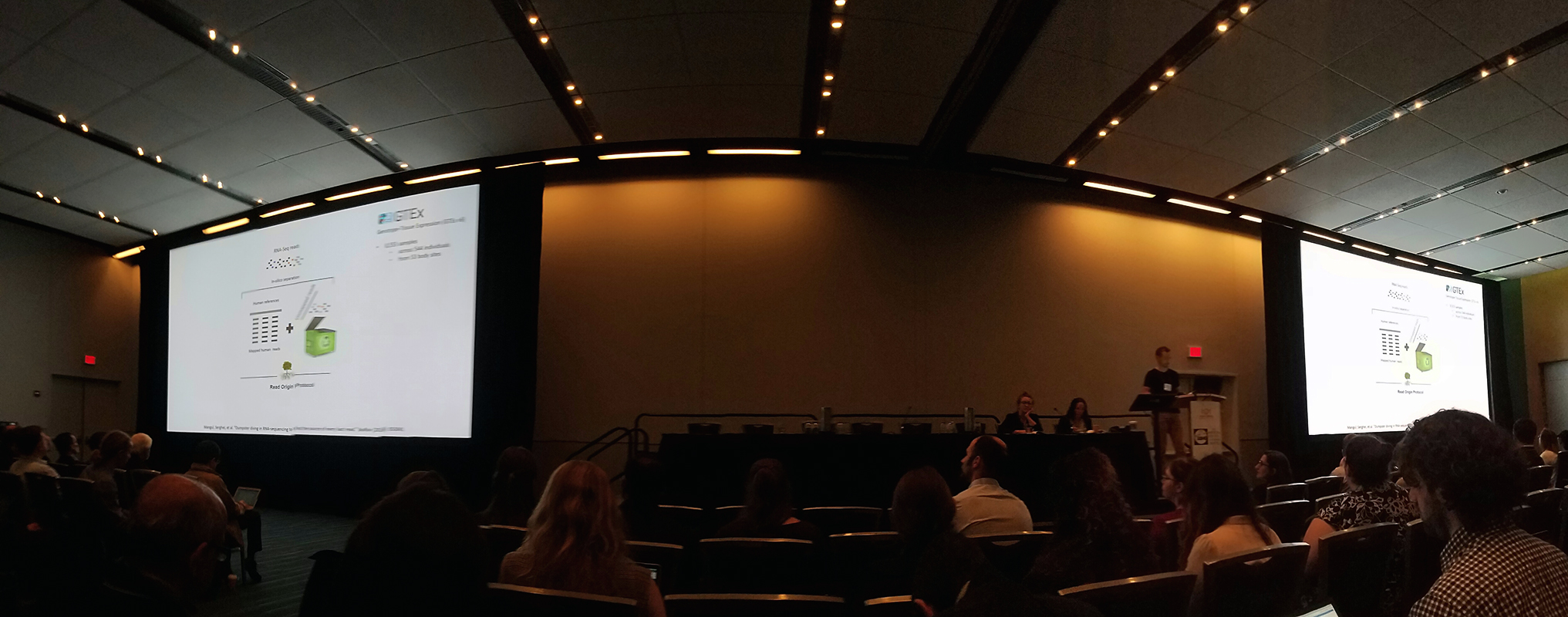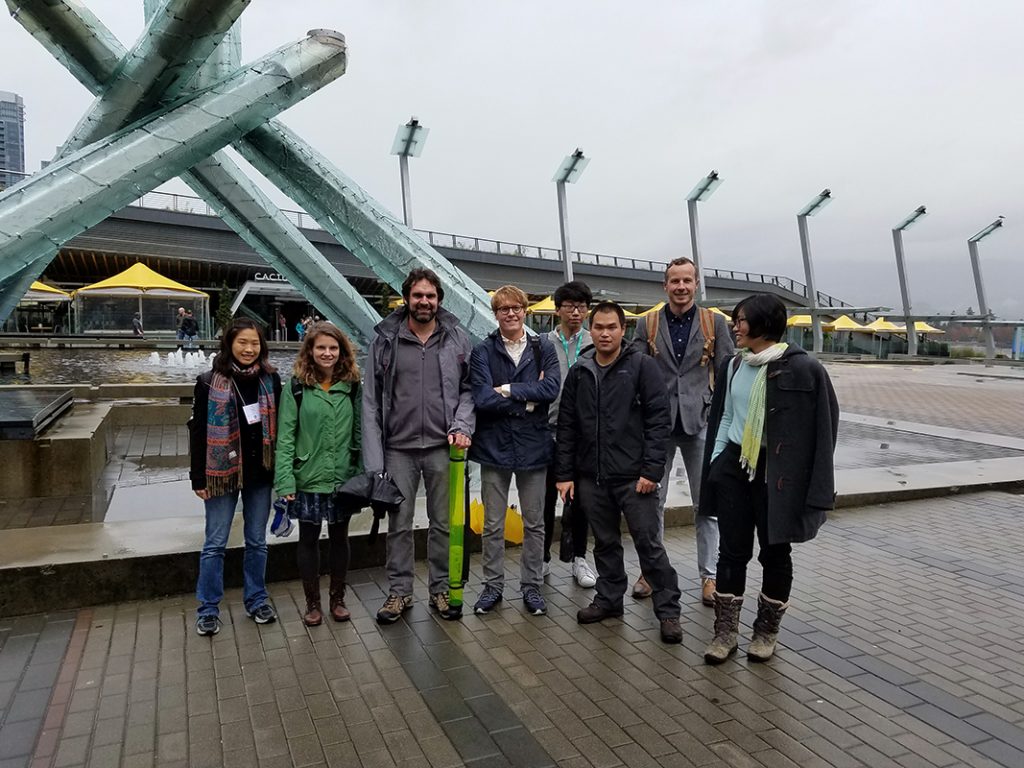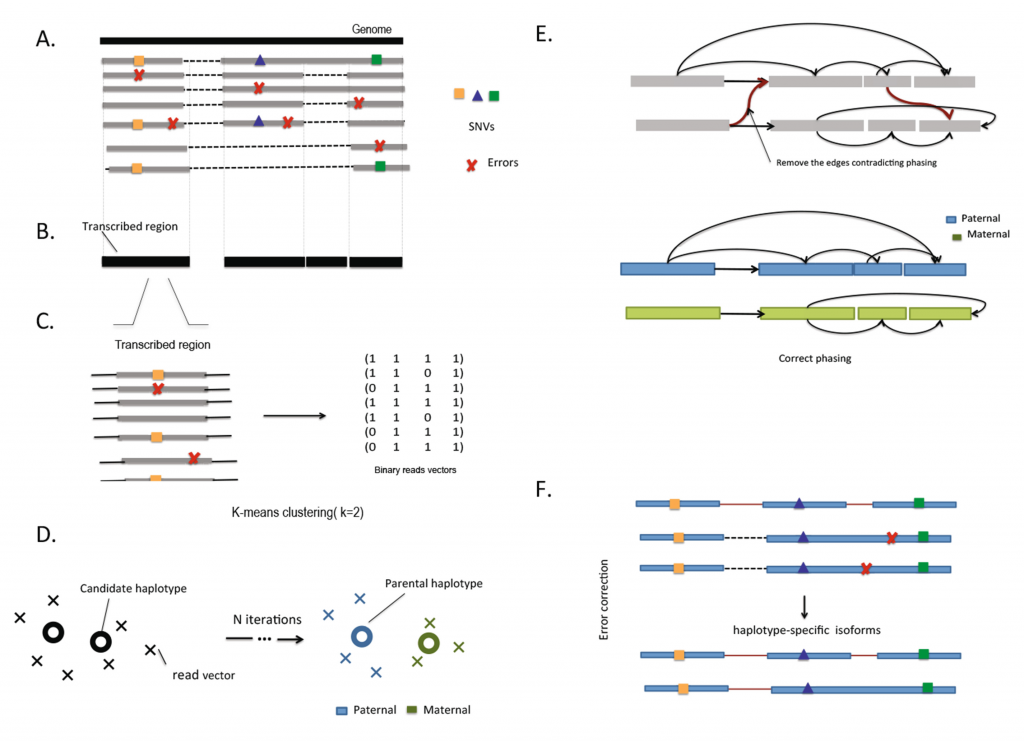
Last week many members of our group traveled to Vancouver, British Columbia, for the annual meeting of the American Society of Human Genetics. The 66th Annual Meeting, which took place October 18-22, 2016, featured over 3000 talks, workshops, and poster presentations on topics such as bioinformatics and computational methods, developmental genetics and gene function, cancer and cardiovascular diseases, evolutionary and population genetics, and genetic counseling.
ZarLab contributed 8 poster presentations and one research talk. Serghei Mangul discussed his recent work on dumpster-diving techniques in a talk titled, “Comprehensive analysis of RNA-sequencing to find the source of every last read across 544 individuals from 53 tissues,” as part of the Interpreting the Transcriptome in Health and Disease symposium. You can view his slides here: https://sergheimangul.files.wordpress.com/2016/10/ashg2016_public.pdf

ZarLab in Vancouver!
Recent alumni Farhad Hormozdiari received a Reviewers’ Choice ribbon for his poster titled, “Joint fine mapping of GWAS and eQTL detects target gene and relevant tissue.” Only the top 10% of posters by topic receive this honor, as determined by the reviewers’ scores of the submitted abstracts. Congratulations, Farhad!
Other posters presented by members of our group:
- Prevalence of allelic heterogeneity in complex traits. Eleazar Eskin
- Modeling the covariance of effect sizes in a meta-analysis. Dat Duong
- Estimating regional heritability in the presence of linkage disequilibrium. Lisa Gai
- linear mixed models for quantitative traits in health-system scale data. Michael Bilow
- Utilizing allele specific expression to identify cis-regulatory variants. Jennifer Zou
- Haplotype-based predictors for complex trait association. Rob Brown
- Repeat elements expression profile across different tissues in GTEx samples. Harry Yang
- Dat Duong
- Lisa Gai
- Jennifer Zou
- Farhad Hormozdiari






